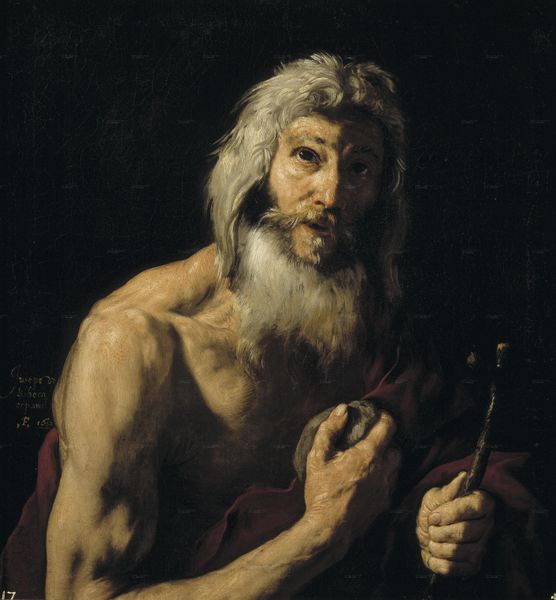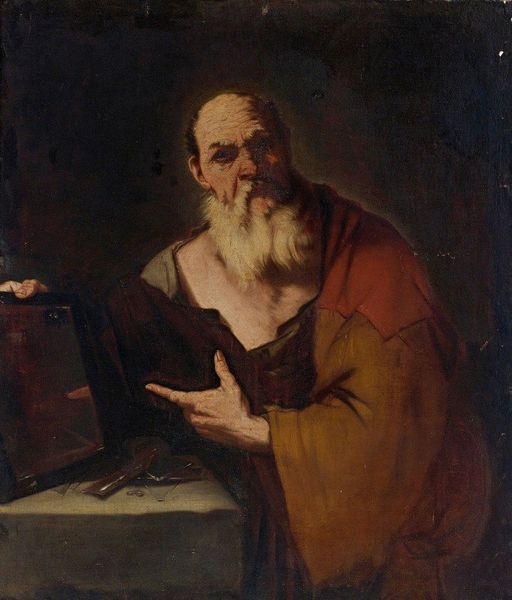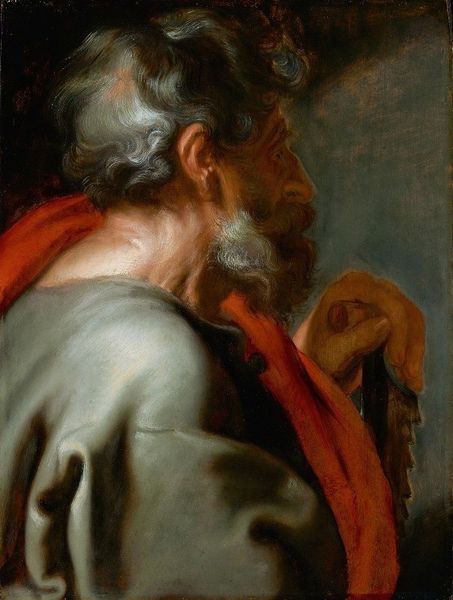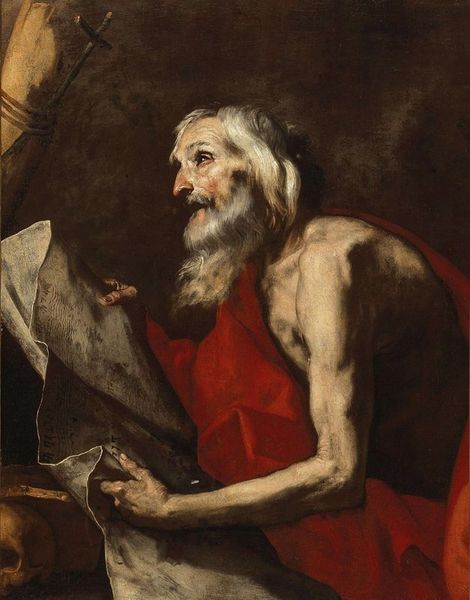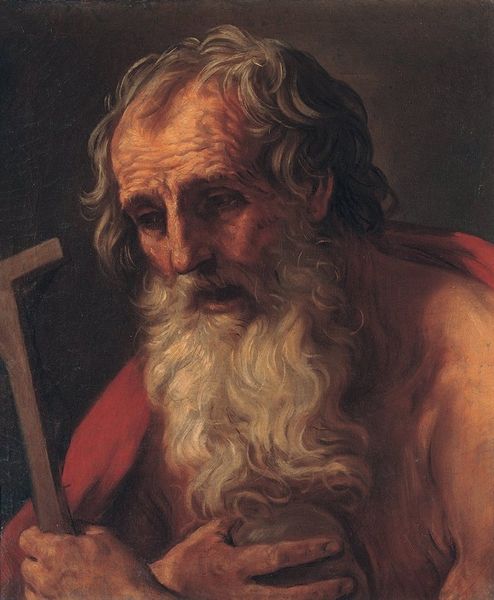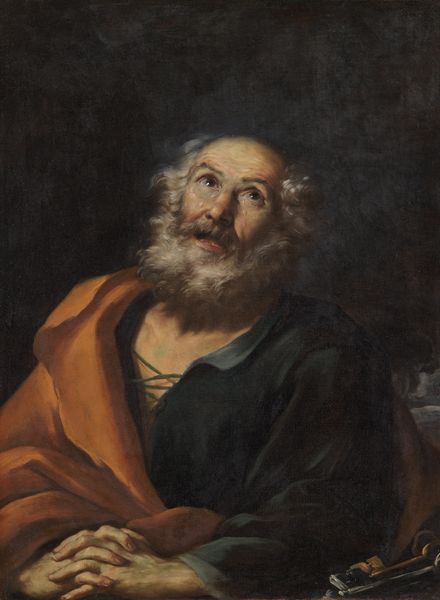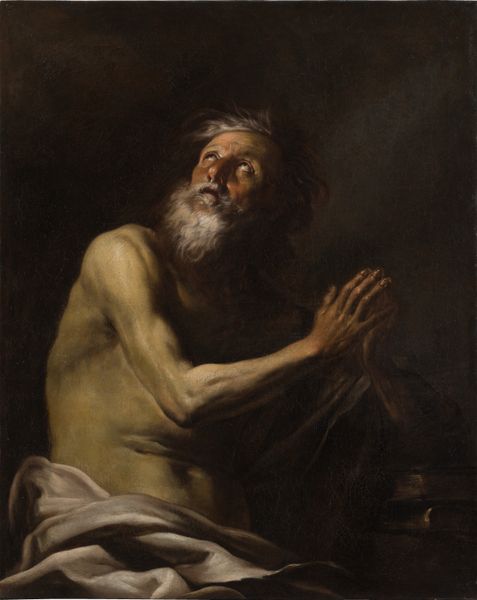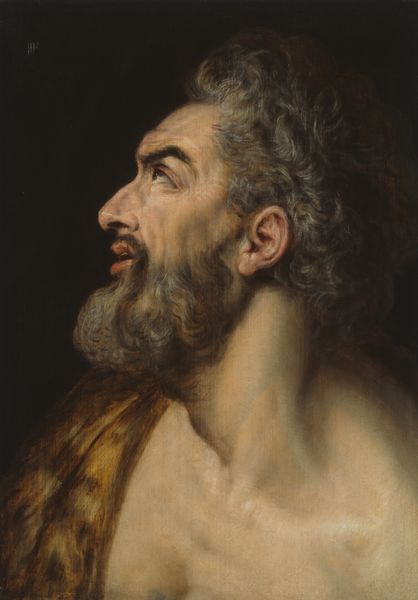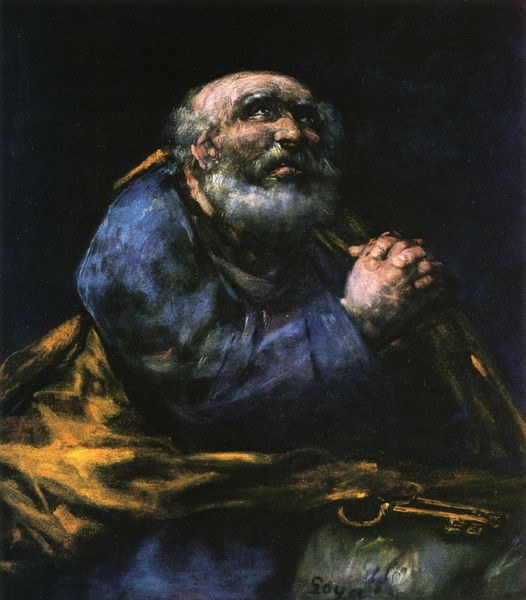
oil-paint
#
portrait
#
baroque
#
oil-paint
#
figuration
#
oil painting
#
history-painting
#
nude
Copyright: Public domain
Curator: Welcome. We're looking at a striking depiction of Jupiter, attributed to Jacob Jordaens. The oil paint is rendered with an exquisite eye, yet there's little recorded about this specific history painting. What do you notice? Editor: It's powerful. Raw even. The heavy brushstrokes and that deep red cloak give it a visceral energy. The material handling—the paint seems almost sculptural, layered thickly. It's hard to miss the sheer labor embedded in the construction. Curator: Yes, look at the way Jordaens uses chiaroscuro; it emphasizes the texture and the three-dimensionality of form. And how does this relate to Baroque ideals, using heightened contrast, dynamic compositions, and intense emotion to inspire viewers. It speaks volumes, doesn’t it? Editor: Absolutely, and what about the process of actually preparing the pigment for that cloak? How many hours went into grinding and mixing to achieve that particular saturation and hue? And consider the sourcing of the canvas and oils during this era, making visible the network of production supporting artists like Jordaens. It adds another layer of value. Curator: Very astute. His pose, turned slightly to the side, against the backdrop’s tempestuous strokes—there’s dynamism in the lines, shape, color composition, revealing classical structure of balance and grandeur. It shows his creative interpretation of subject. Editor: And consider how these "grand" depictions, reliant on rare and skillfully made materials, would circulate amongst the wealthy. The painting as an object of prestige, an enactment of power relations through materiality itself. One can almost see a kind of propaganda in it. Curator: It underscores his place, then, within this artistic legacy and broader system. Jordaens uses historical representation, classical symbolism, as elements of design for the sake of communicating ideals of Baroque art: divine inspiration, emotional connection, vivid experiences. Editor: Indeed. By interrogating the making, sourcing, and owning of the art piece, and questioning classical value structures, it challenges how art's worth is defined within market economies. It’s all quite complex, isn't it? Curator: The dialogue, like art itself, is always ongoing. Editor: A constant revision, shaping our way of viewing.
Comments
No comments
Be the first to comment and join the conversation on the ultimate creative platform.
